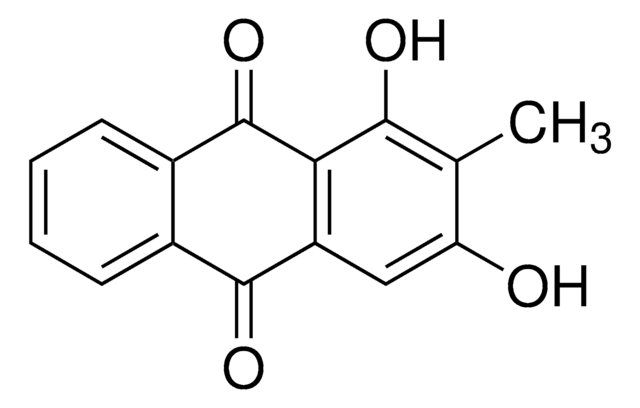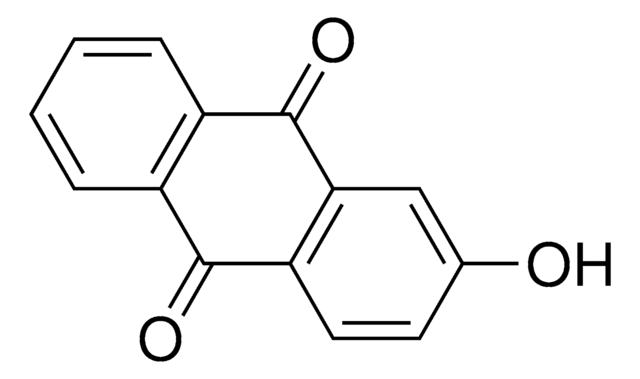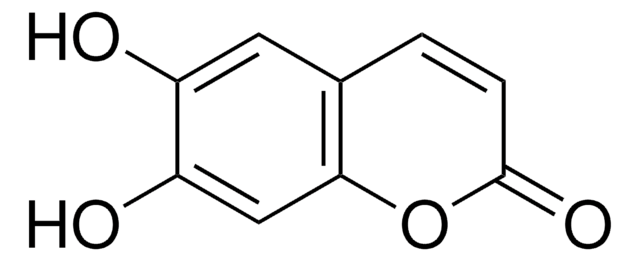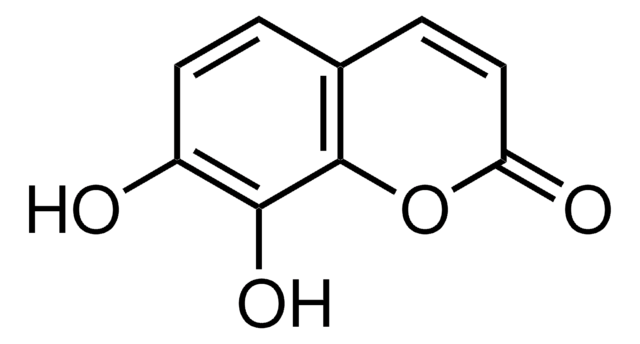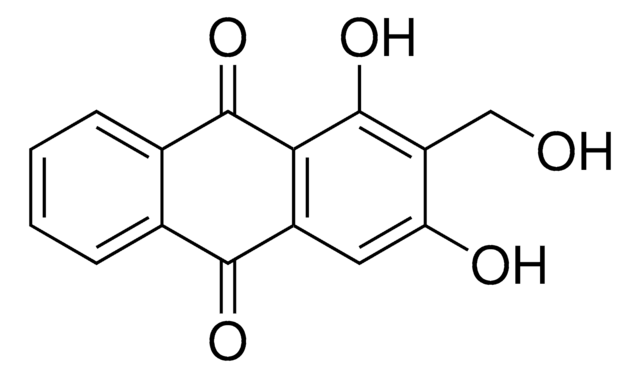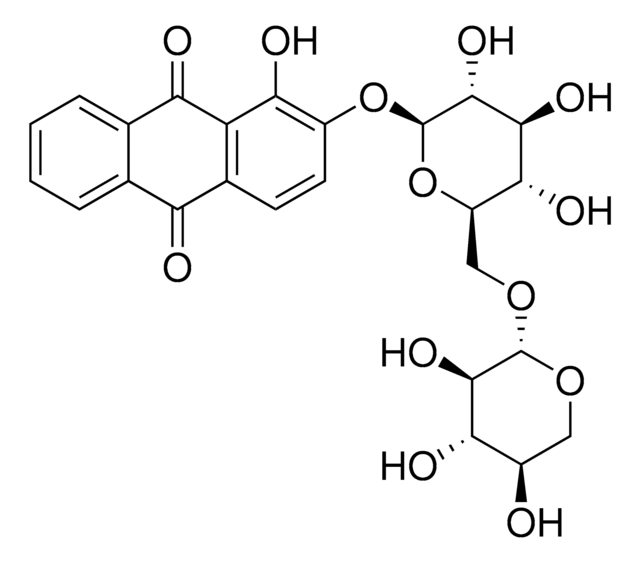74553
Rubiadin
analytical standard
Sinonimo/i:
1,3-Dihydroxy-2-methyl-9,10-anthracenedione, 1,3-Dihydroxy-2-methylanthraquinone
About This Item
Prodotti consigliati
Grado
analytical standard
Livello qualitativo
Saggio
≥95.0% (HPLC)
Durata
limited shelf life, expiry date on the label
tecniche
HPLC: suitable
gas chromatography (GC): suitable
applicazioni
food and beverages
Formato
neat
Stringa SMILE
O=C1C2=C(C=C(O)C(C)=C2O)C(C3=CC=CC=C31)=O
InChI
1S/C15H10O4/c1-7-11(16)6-10-12(13(7)17)15(19)9-5-3-2-4-8(9)14(10)18/h2-6,16-17H,1H3
IRZTUXPRIUZXMP-UHFFFAOYSA-N
Cerchi prodotti simili? Visita Guida al confronto tra prodotti
Applicazioni
Avvertenze
Warning
Indicazioni di pericolo
Consigli di prudenza
Classi di pericolo
Acute Tox. 4 Oral - Carc. 2
Codice della classe di stoccaggio
11 - Combustible Solids
Classe di pericolosità dell'acqua (WGK)
WGK 3
Punto d’infiammabilità (°F)
Not applicable
Punto d’infiammabilità (°C)
Not applicable
Choose from one of the most recent versions:
Possiedi già questo prodotto?
I documenti relativi ai prodotti acquistati recentemente sono disponibili nell’Archivio dei documenti.
Il team dei nostri ricercatori vanta grande esperienza in tutte le aree della ricerca quali Life Science, scienza dei materiali, sintesi chimica, cromatografia, discipline analitiche, ecc..
Contatta l'Assistenza Tecnica.